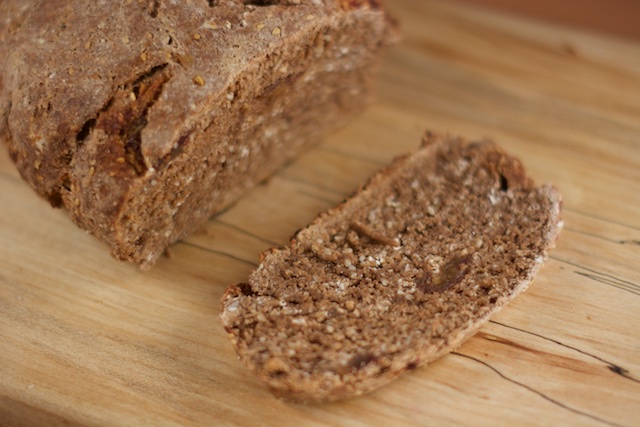
St. John’s Bread sliced
Here’s another oldie but goodie from my college days. To feed 30 in our extended housing community we used to get a pallet of bread once a week from Wildflour Cooperative Bakery. Out of all of Wildflour‘s varieties of bread, their St. John’s Bread was the most interesting and extreme, a dense, sweet unleavened loaf loaded with dates, oats, and sesame seeds. It was the eighties equivalent of the life-changing bread.
The name St. John’s refers to John the Baptist who is said in the Bible who is referred to have survived in the wilderness on “locusts and honey.” It was traditionally (though not so much currently) believed that “locusts” referred to carob pods rather than the insects.
Toasted carob powder is sweet and good in recipes as long as you never try to pretend that it’s chocolate but treat is as its own flavor. It had its culinary moment back in the seventies and eighties. This loaf also has a little soy flour. Back in the day we used soy flour as you would use protein powder today: as a vaguely healthy thing to add and give your product a little extra protein.
I can imagine the paleos shuddering right now at the thought of raw soybeans ground up into flour and baked into bread. I’ve tried the recipe with and without the soy flour. While it may be our nostalgia talking, my husband and I agree that this bread just doesn’t taste like it should without it.
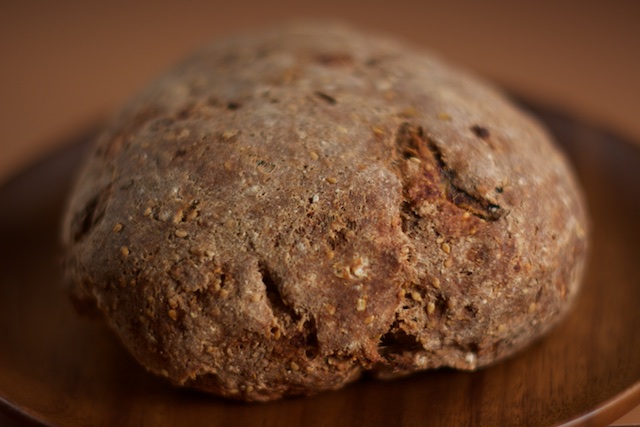
St. John’s Bread
The third unusual ingredient in this loaf is diastatic malt. It helps bread rise, but the quantity of malt in this loaf much exceeds the amount used for that purpose. Here it gives the bread a lot of sweetness. I admit I am not quite sure that this is what was used in the original recipe which just calls for ‘malt,’ but it would make sense and the result tastes like it should.
The recipe for St. John’s Bread was originated by People’s Bakery in San Francisco, shared with other co-op bakeries around the nation like Wildflour, and appeared in the Uprisings cookbook. I’ve halved it and fiddled slightly, but the biggest change I’ve made is to leaven the loaf with yeast.
The original unleavened recipe was left overnight and in theory had a chance of rising, but was still pretty much a brick (a good brick!). My version still gets a long rest, an overnight cold rise in the the refrigerator that gives the dough time to develop its texture and flavor.
With the yeast, this is still a very thick bread, but not quite as heavy as the original. It’s biggest distinguishing feature is the sweetness of the malt combined with the roasted flavor of the carob. It’s a good one for winter along with a steaming vegetable soup. I just had it for dinner along with a nice hot bowl of carrot lentil.
- 1⅓ cup water
- 2 Tbsp. diastatic malted barley flour
- 2 tsp. baking yeast
- 2¾ cups hard whole wheat flour
- ¼ cup soy flour
- 1 Tbsp. plus 1 tsp. roasted carob powder
- 1 Tbsp. neutral-flavored oil (I used avocado oil)
- ½ tsp. salt
- ⅓ cup sesame seeds (I used hulled sesame seeds)
- ½ cup regular rolled oats
- 2.5 oz dates (packed ⅓ cup chopped dates)
- Mix the yeast and diastatic malt with the water.
- Mix with all remaining ingredients (I used a stand mixer with the paddle attachment for this).
- Knead for five minutes (dough hook wouldn't pick up the dough so I did this by hand).
- Put loaf in an oiled ceramic bowl, cover with saran wrap.
- Leave overnight in a refrigerator.
- Take out of the fridge and let the bowl and dough come to room temperature and rise, which may take several hours. You can speed up the process by putting the loaf in a warm, draft-free place.
- Punch the loaf down, reshape it into a ball.
- Put parchment paper on a baking sheet and put the loaf on top. Cover with plastic wrap and let rise again for 30-60 minutes.
- Preheat oven to 350 degrees.
- Bake for 50-60 minutes until the crust looks cooked and the bread sounds hollow when thumped.


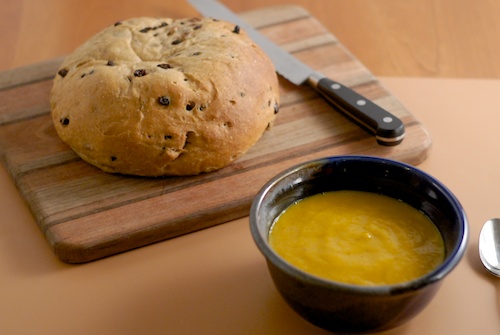
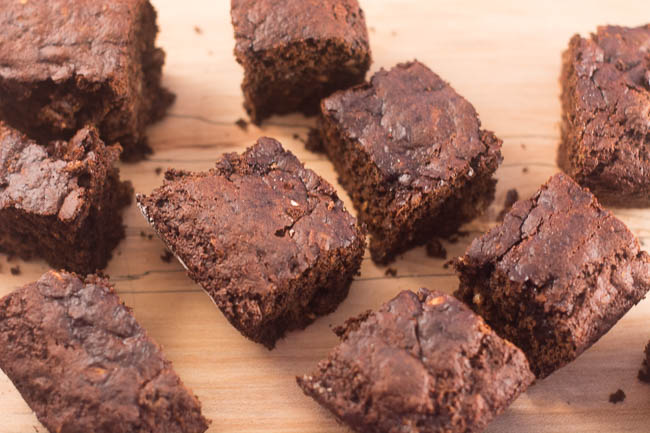
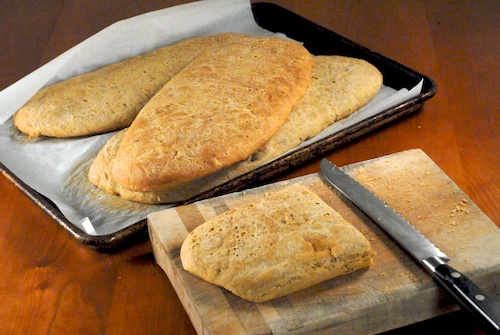


{ 2 comments… read them below or add one }
There is nothing like a great, dense “hippy” bread! Love them all and am a bread baking enthusiast. Have taken classes. Have taught classes. I find the entire process of making bread by had a religious experience (almost) and certainly a lost art that I am fervent about sharing to pass along to those raising young families now!
Thanks for sharing. I came to your site to get to know where you were from and more about you – but you haven’t an “about page”, so instead, found myself browsing a bit… have no idea even what country you are from.
🙂
Valerie
A Canadian Foodie recently posted..Traditional Polish Marzipan Beehive Confections
Well, I’ll have to update that! I have an about page but it’s minimal. I am in the Northwest US. Thanks for visiting! I’ve been an occasional visitor on your blog for years, but somehow didn’t realize you were deep into bread baking, that’s great! I know a few people who still make their own bread, it’s quite worthwhile and like a lot of cooking, not as hard as people think.